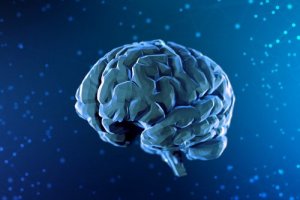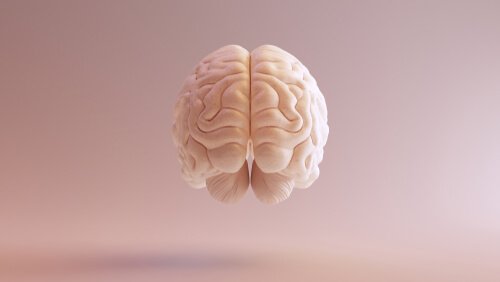A Brief History of Neuroscience

The history of neuroscience started many, many years ago. In the 5th century B.C., Alcmaeon of Croton was dissecting an animal when he discovered the optic nerve. His findings led him to theorize that thoughts and feelings reside in the brain. In response to this rather modern theory, Aristotle clung to the old argument that human intellectual processes take place in the heart. Aristotle (and many of his contemporaries) believed that the brain was responsible for cooling the blood that the heart overheated.
Later, Hippocrates developed the humoral theory. He proposed that human physical health and illness was based on the balance of four bodily liquids. According to Hippocrates, an imbalance in the proportions of these liquids would lead to illness or personality changes. Greek physician and philosopher Galen disagreed with the humoral theory. He argued that the brain was responsible for processing feelings and memory.
Between 1630 and 1650, Rene Descartes developed the mechanistic theory. He also wrote about the body-soul duality, by which the brain would be responsible for behavior. Not only that, but he believed that the pineal gland was the communication link between the two dimensions. His ideas placed him at the forefront of the mind-brain debate that continues to plague neuroscientists even today.

Neuroscience in the 19th Century
Locationalism
In 1808, Gall published an article about phrenology. He argued that there’s a specific area in the brain for each mental process. This theory of locationalism made researchers look at mental processes even closer to the brain. In the course of the research, Brodmann described 52 areas in the brain and their associated mental processes.
Scientists also believed that the development of certain skills and abilities was related to a size increase in the corresponding brain area. That was the beginning of the concept of the brain as a dynamic organ that could adapt its physical structure to environmental demands while still saving enough space for the most important skills.
All of these theories led scientists to believe that they could recognize people’s intellectual and moral abilities by the size and shape of their skulls. Obviously, these scientists didn’t have the neuroimaging technology we have today.
Connectivism
In 1861, Pierre Paul Broca lectured at the Society of Anthropology of Paris about a patient who had sustained a head injury. The patient lost the ability to speak, but could still understand what people were saying. For the scientific community, this was the first proof they had of the relationship between the brain and language. That particular area of the brain was later named the Broca area.
In 1874, Carl Wernicke made a similar discovery. He had patients who could speak, but not understand. This lead to a new perspective called connectivism. This theory argued that only the most basic functions are limited to particular areas of the brain. Meanwhile, more complex functions are the result of the interaction between different areas.
In 1885, Hermann Ebbinghaus wrote the first publications on memory. In his essays, he described evaluation methods that scientists still use today. Shortly thereafter, researchers coined the term “neuron” thanks to Santiago Ramón de Cajal’s work in 1891.
The History of Neuroscience in the 20th Century
At the beginning of the 20th century, two world wars affected the development of neuroscience. World War I left many people dead, but also many wounded.
There were thousands of patients with neurological damage, which exponentially increased the need for neurological rehabilitation. There was a strong push for more research on the brain and neurological issues. During World War II, neuroscience solidified as a discipline. Important neuroscientists such as Alexander Romanovich Luria also developed important neuropsychological interventions during this time.
In 1962, the Massachusetts Institute of Technology (MIT) launched the Neuroscience Research Program. The goal of the program was to connect behavioral and neurological scientists from universities all over the world. They held weekly meetings, conferences, and debates that shed light on different university education programs.
“Neuroscience is by far the most exciting branch of science because the brain is the most fascinating object in the universe. Every human brain is different – the brain makes each human unique and defines who he or she is.”
-Stanley B. Prusiner, Nobel Prize in Medicine in 1997-
From that collaboration stemmed the Society for Neuroscience, which was founded in Washington in 1969. This is still the largest neuroscience society in the world, with about 37,000 members. It’s a global benchmark for advances in neuroscience and holds an annual meeting that regularly attracts over 30,000 attendees.
Thanks to the efforts of these organizations and the successful interdisciplinary collaboration that took place, in 1990 the National Advisory Neurological Disorders and Stroke Council published a report called “Decade of the Brain: Answers Through Scientific Research”. The report identified fourteen categories of under-researched neurological disorders, prompting a boom in neuroscientific research.

The 21st Century and the Future History of Neuroscience
In 2002, researchers launched the Blue Brain project, hoping to create a simulation of a mammalian brain on a molecular level in order to study its structure. Many countries from all over the world signed on to this exciting project.
Then, in 2013, Barack Obama announced the beginning of a project called BRAIN. This proposal is on the same level as the Human Genome Project. The goal is to develop a detailed and dynamic map of the human brain. The U.S.A. initially invested $110 million USD in the initiative. This is the great new challenge for the U.S.A., as well as the tool with which they hope to lead future brain research.
However, Europe has a slight advantage over the U.S.A. in this particular area. At the same time that Obama announced the BRAIN project, Europe implemented an initiative called HUMAN BRAIN. They plan to invest over one billion euros in the project. Their goal is to make significant advancements in our understanding of the human brain over the next ten years.
In conclusion, the history of neuroscience is a fascinating one. Scientists have made incredible strides over the years and our understanding of the human brain is more sophisticated than ever. Nevertheless, the increased interest and investment in research on the human brain means that there are many amazing discoveries yet to come.
The history of neuroscience started many, many years ago. In the 5th century B.C., Alcmaeon of Croton was dissecting an animal when he discovered the optic nerve. His findings led him to theorize that thoughts and feelings reside in the brain. In response to this rather modern theory, Aristotle clung to the old argument that human intellectual processes take place in the heart. Aristotle (and many of his contemporaries) believed that the brain was responsible for cooling the blood that the heart overheated.
Later, Hippocrates developed the humoral theory. He proposed that human physical health and illness was based on the balance of four bodily liquids. According to Hippocrates, an imbalance in the proportions of these liquids would lead to illness or personality changes. Greek physician and philosopher Galen disagreed with the humoral theory. He argued that the brain was responsible for processing feelings and memory.
Between 1630 and 1650, Rene Descartes developed the mechanistic theory. He also wrote about the body-soul duality, by which the brain would be responsible for behavior. Not only that, but he believed that the pineal gland was the communication link between the two dimensions. His ideas placed him at the forefront of the mind-brain debate that continues to plague neuroscientists even today.

Neuroscience in the 19th Century
Locationalism
In 1808, Gall published an article about phrenology. He argued that there’s a specific area in the brain for each mental process. This theory of locationalism made researchers look at mental processes even closer to the brain. In the course of the research, Brodmann described 52 areas in the brain and their associated mental processes.
Scientists also believed that the development of certain skills and abilities was related to a size increase in the corresponding brain area. That was the beginning of the concept of the brain as a dynamic organ that could adapt its physical structure to environmental demands while still saving enough space for the most important skills.
All of these theories led scientists to believe that they could recognize people’s intellectual and moral abilities by the size and shape of their skulls. Obviously, these scientists didn’t have the neuroimaging technology we have today.
Connectivism
In 1861, Pierre Paul Broca lectured at the Society of Anthropology of Paris about a patient who had sustained a head injury. The patient lost the ability to speak, but could still understand what people were saying. For the scientific community, this was the first proof they had of the relationship between the brain and language. That particular area of the brain was later named the Broca area.
In 1874, Carl Wernicke made a similar discovery. He had patients who could speak, but not understand. This lead to a new perspective called connectivism. This theory argued that only the most basic functions are limited to particular areas of the brain. Meanwhile, more complex functions are the result of the interaction between different areas.
In 1885, Hermann Ebbinghaus wrote the first publications on memory. In his essays, he described evaluation methods that scientists still use today. Shortly thereafter, researchers coined the term “neuron” thanks to Santiago Ramón de Cajal’s work in 1891.
The History of Neuroscience in the 20th Century
At the beginning of the 20th century, two world wars affected the development of neuroscience. World War I left many people dead, but also many wounded.
There were thousands of patients with neurological damage, which exponentially increased the need for neurological rehabilitation. There was a strong push for more research on the brain and neurological issues. During World War II, neuroscience solidified as a discipline. Important neuroscientists such as Alexander Romanovich Luria also developed important neuropsychological interventions during this time.
In 1962, the Massachusetts Institute of Technology (MIT) launched the Neuroscience Research Program. The goal of the program was to connect behavioral and neurological scientists from universities all over the world. They held weekly meetings, conferences, and debates that shed light on different university education programs.
“Neuroscience is by far the most exciting branch of science because the brain is the most fascinating object in the universe. Every human brain is different – the brain makes each human unique and defines who he or she is.”
-Stanley B. Prusiner, Nobel Prize in Medicine in 1997-
From that collaboration stemmed the Society for Neuroscience, which was founded in Washington in 1969. This is still the largest neuroscience society in the world, with about 37,000 members. It’s a global benchmark for advances in neuroscience and holds an annual meeting that regularly attracts over 30,000 attendees.
Thanks to the efforts of these organizations and the successful interdisciplinary collaboration that took place, in 1990 the National Advisory Neurological Disorders and Stroke Council published a report called “Decade of the Brain: Answers Through Scientific Research”. The report identified fourteen categories of under-researched neurological disorders, prompting a boom in neuroscientific research.

The 21st Century and the Future History of Neuroscience
In 2002, researchers launched the Blue Brain project, hoping to create a simulation of a mammalian brain on a molecular level in order to study its structure. Many countries from all over the world signed on to this exciting project.
Then, in 2013, Barack Obama announced the beginning of a project called BRAIN. This proposal is on the same level as the Human Genome Project. The goal is to develop a detailed and dynamic map of the human brain. The U.S.A. initially invested $110 million USD in the initiative. This is the great new challenge for the U.S.A., as well as the tool with which they hope to lead future brain research.
However, Europe has a slight advantage over the U.S.A. in this particular area. At the same time that Obama announced the BRAIN project, Europe implemented an initiative called HUMAN BRAIN. They plan to invest over one billion euros in the project. Their goal is to make significant advancements in our understanding of the human brain over the next ten years.
In conclusion, the history of neuroscience is a fascinating one. Scientists have made incredible strides over the years and our understanding of the human brain is more sophisticated than ever. Nevertheless, the increased interest and investment in research on the human brain means that there are many amazing discoveries yet to come.
This text is provided for informational purposes only and does not replace consultation with a professional. If in doubt, consult your specialist.







